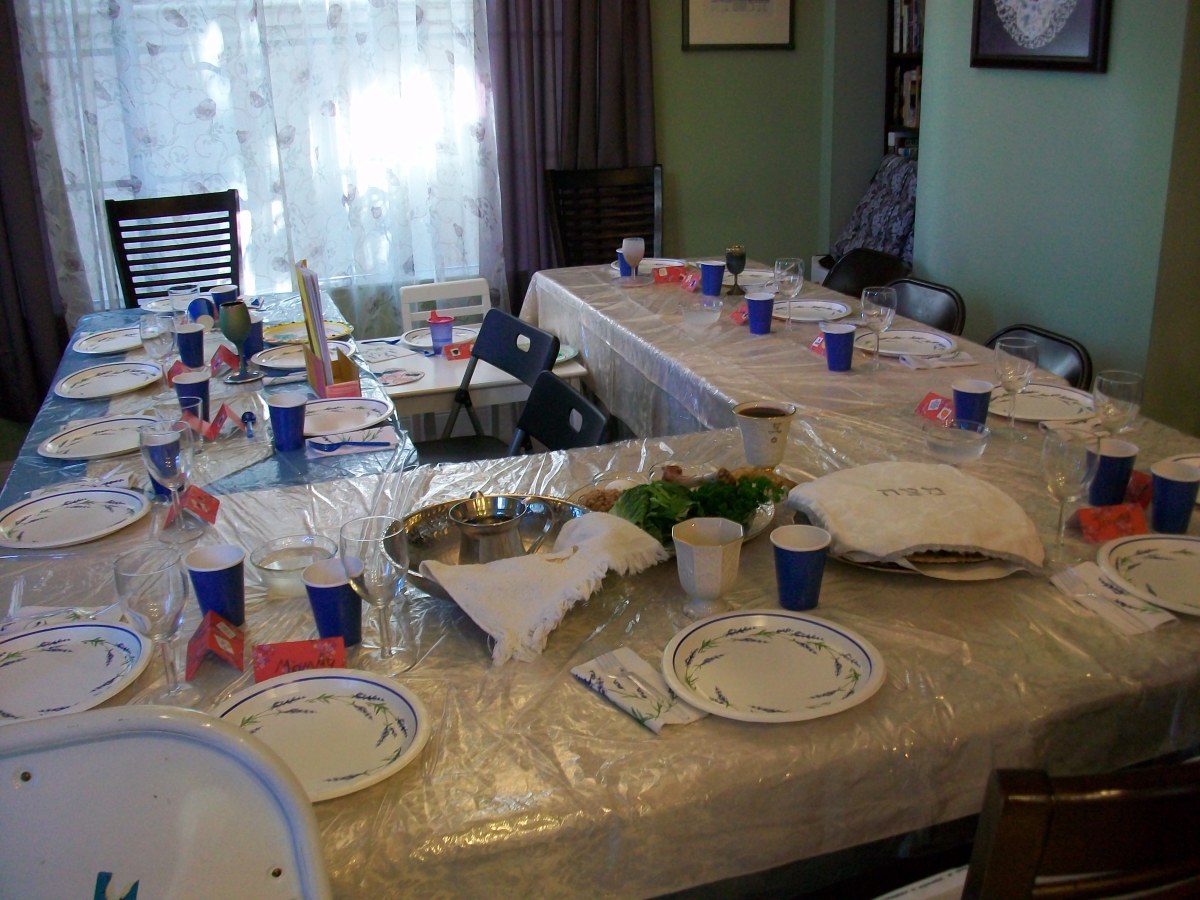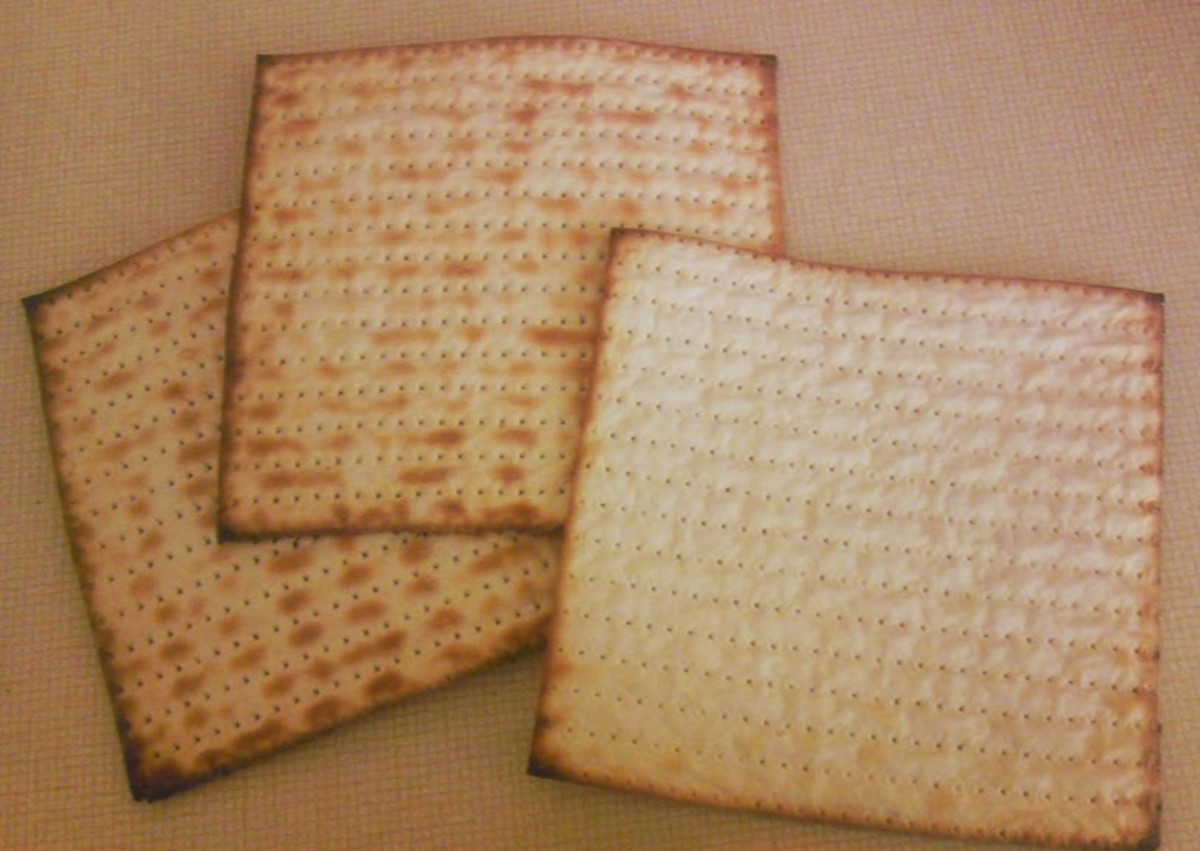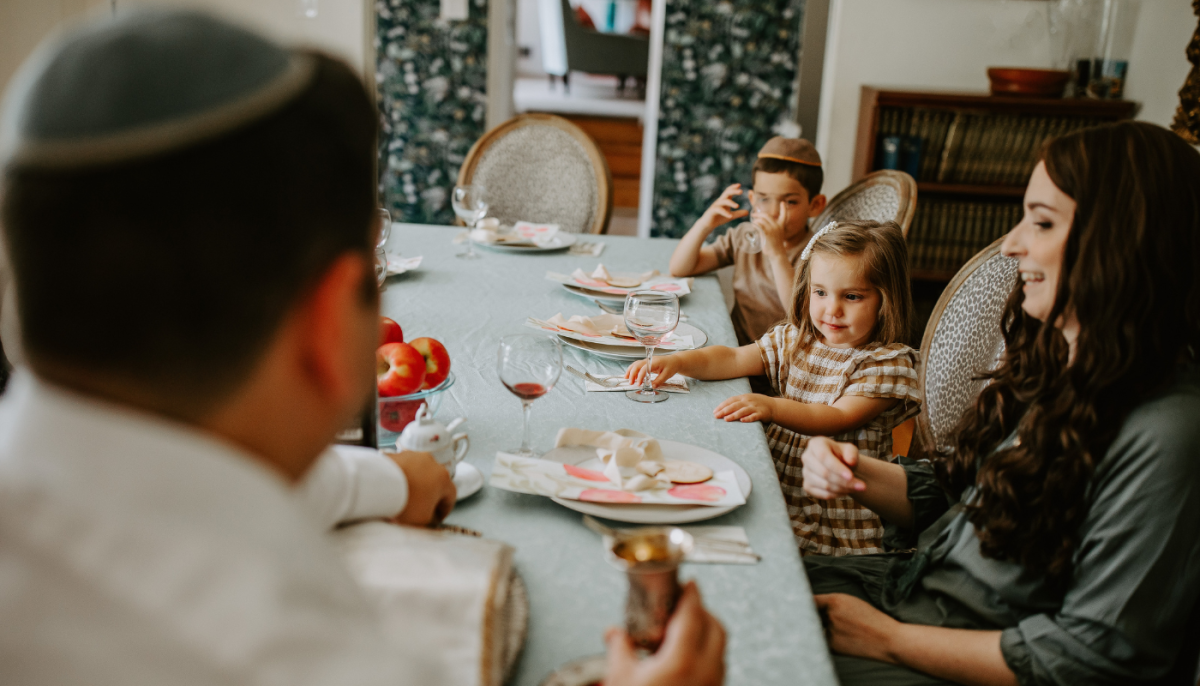Passover or Pesach: A Repast with a Past
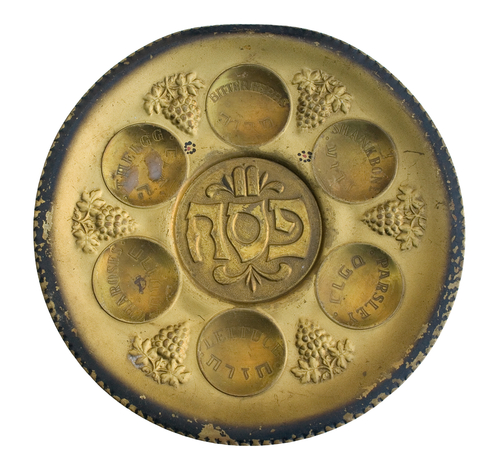
At dinner time on 19 April 2019, Jewish children will partake of a special meal. There are four questions some may ask: "Why on this night do we eat only unleavened bread? Why do we eat only bitter herbs? Why do we dip [our vegetables] twice? Why do we recline?"
The dinner is the ceremonial Seder meal which takes place on the eve of the seven day (eight in the Diaspora) festival of Passover or Pesach. The most important and ancient festival in the Jewish calendar, it commemorates the liberation of the Israelites from Egyptian slavery.
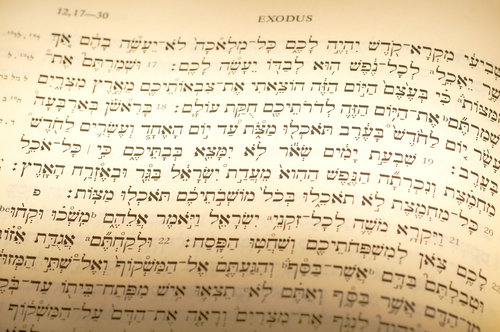
Passover rituals: a retelling of the Exodus story
Many Passover rituals have their roots in separate ancient agricultural spring festivals which occurred around the traditional date of the Exodus. They were combined into the one festival, with the agricultural/pastoral significance of the various rituals reinterpreted and associated with the Exodus.
The questions, together with seven symbolic foods on the Seder table, are the prompts for retelling the Exodus story.
Passover is the only festival where strict food regulations are ordained. Certain foods are required to be specifically Kosher l'Pesach (Kosher for Passover). Simply being kosher will not do.
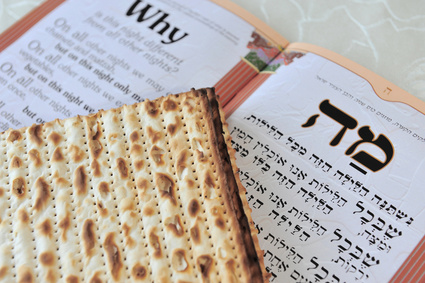
Specific Passover rules about leavening
The prohibition of hamez , or leavening, is the fundamental rule and is repeated numerous times in the Torah. As the Israelites had to leave Egypt in a hurry, they had no time to allow the bread to rise. In memory of this, a special unleavened bread of flour and water (mazzah ) must be eaten on the first night. Further, hamez or foods containing hamez cannot be eaten or owned by, or found in, any household for the entire festival period.
Hamez is the leavened product formed when any of five grains - wheat, barley, rye, oats or spelt - comes into contact with water for more than 18 minutes. As mazzah is made from flour and water, only those meeting the timing test are deemed Kosher l'Pesach . Some consider Mazzah shemurah the only acceptable type as it carries rabbinical supervision of moisture contact from the time of harvesting of the grain. Most accept a second category where supervision commences from the time the wheat is milled. Mazzah which has not been supervised for Passover cannot be used except in times of emergency.
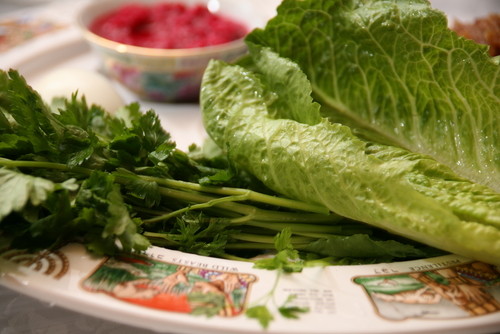
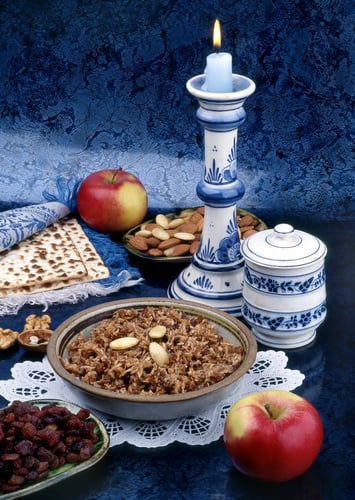
Symbolism of foods of the Passover Seder meal
The symbolic foods include a roasted lamb bone (sometimes a roasted poultry neck is used), a roasted egg, maror or bitter herbs (which may be lettuce or horseradish), karpas ("greens", which may be parsley, celery, or root vegetables such as potatoes or radish), haroset (a mixture of fruits, nuts, spices and wine ground into a paste resembling mortar), saltwater and three pieces of mazzah .
The roasted bone represents the paschal lamb sacrificed and eaten in haste that fateful night when the plague striking down the first-born in Egypt passed over the homes of Israelites, distinguished by lambs' blood smeared on the doors. These rites, initially conducted at local levels, eventually became centralised at, and forbidden outside, the Temple in Jerusalem. With the destruction of the Second Temple in 70CE, the sacrificial rites were not longer possible. (Some sects disagree with mainstream rabbinical thought on this subject.)
Eating roast lamb, or indeed any roasted meats, at Passover became a controversial issue and remains so to this day. The roasted hard-boiled egg symbolises the roasted festival offerings (hagigah ) that were made along with the lamb in Temple times.
The bitter herbs, a reminder of the bitterness of slavery, are dipped into the haroset , which symbolises the mortar used in building the Egyptian cities of Pithom and Ramses. The karpas , symbolising the new growth of spring as well as hope, is dipped into saltwater which represents the tears shed in slavery.
All Sabbath and festival meals are opened with a benediction made over two whole loaves of bread, which represent the Manna that miraculously fell from above and fed the Israelites during their 40 years in the wilderness.
However, at Passover, a third "loaf" is needed to produce the "afikoman " to be eaten at the end of the night. Symbolising the "bread of poverty", it is broken into two parts. One half becomes the afikoman and is hidden until the end of the meial.
The word afikoman has its origins in a Greek word for the revelry that followed a banquet. It was subsequently used to refer to "dessert". However, no food was permitted after eating the sacrificial meat to ensure that the taste lingered. After the destruction of the Temple, this piece of mazzah was used to symbolise the paschal sacrifice and care is taken to eat it before midnight, as was required of the original.
The reclining position adopted when partaking of the Seder meal reinforces the concept of freedom. In antiquity, all free people reclined at meal times.
The hamez prohibition presents challenges in Passover baking but is not as limiting as it might initially appear. Cakes can be "leavened" with eggs. Fine and superfine matzo meal, potato flour and finely ground nuts are effective flour substitutes when adapting recipes. Kosher l'Pesach baking powder is also available.
My Jewish friends, the Zajac family, gave my "Passover-suitable" recipe below a pass mark!
RECIPE: LEMON WALNUT SLICE
(makes 36 squares)
75 g cold butter or margarine, cut into bits
125 g fine matzo meal
125 g walnuts, coarsely ground
150 g brown sugar
2 x 60 g eggs, separated
175 g sugar
2 tbsp lemon juice
Finely grated zest of 2 lemons
Icing sugar for dusting (optional)
Combine butter or margarine, matzo meal, walnuts and brown sugar in a food processor and pulse until it resembles coarse meal. Reserve 100 g of the mixture.
Press the remaining mixture on to the bottom of a greased, shallow-sided 23 cm square pan. Bake in a preheated 180ºC oven for 15 to 20 minutes or until the edges start to brown.
Meanwhile, beat egg yolks with sugar until pale and fluffy. Beat in lemon juice and zest. In a separate bowl, whilst egg whites until they just form soft peaks. Fold into the yolk mixture.
Pour the egg mixture over the baked base. Scatter the reserved walnut mixture over evenly.
Bake the slice in the preheated 180°C oven for 25 to 30 minutes or until the topping is golden brown. Leave to cool, in the tin, on a wire rack. When cold, dust with icing sugar (if desired) and cut into 4-cm squares.


